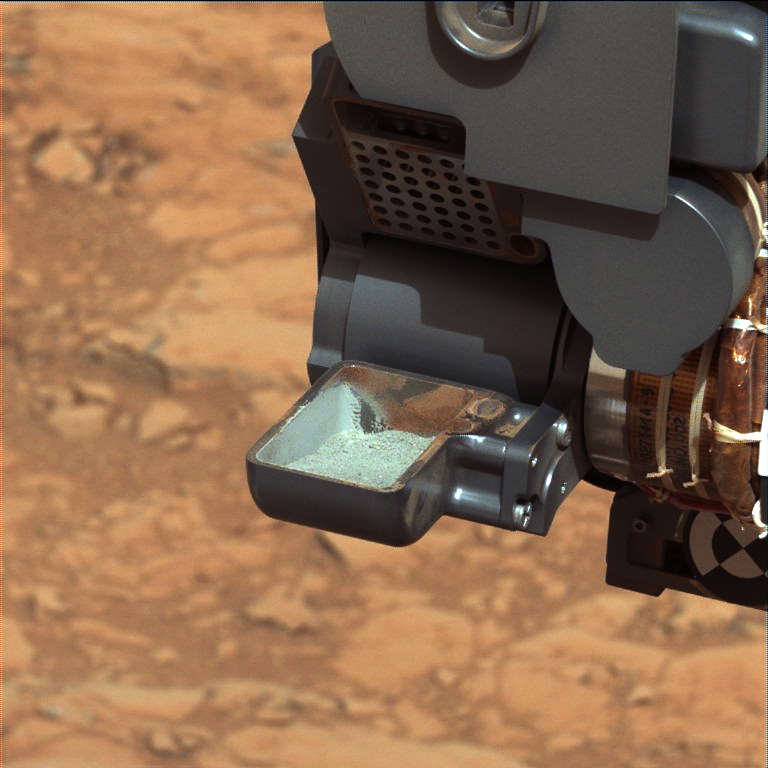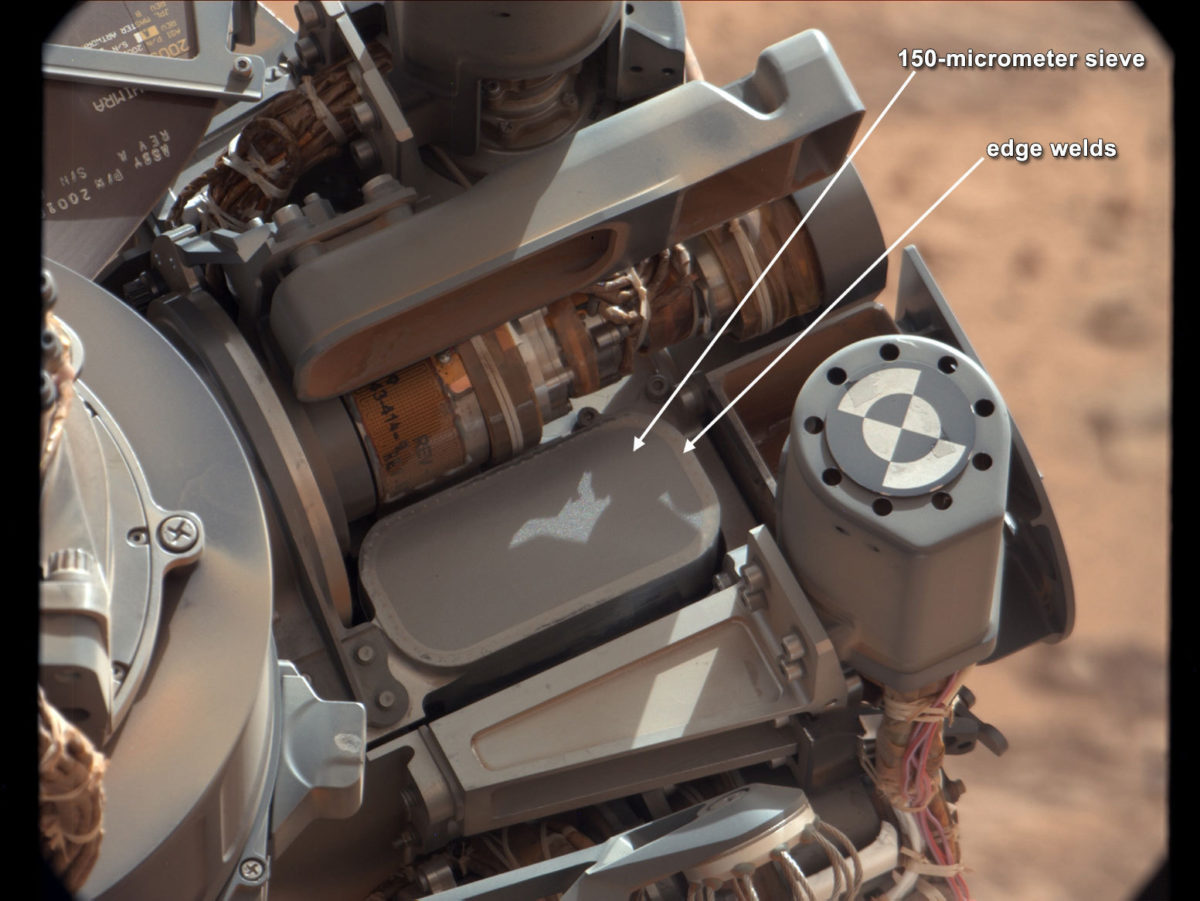Emily Lakdawalla • Feb 20, 2013
Curiosity update, sol 193: drilled stuff is in the scoop, ready for analysis
There was a press briefing today to announce that Curiosity has completed her last major first-time activity: powder drilled from inside a rock at John Klein successfully made its way into the CHIMRA sample handling mechanism in the turret. Sol 193, then, marks the day that Curiosity is finally ready to start the science mission. It's an exciting milestone, a really, really important step in the mission.
But sheesh, it's taken a long time!

For those of you who are impatient to get on the road toward Mount Sharp, you're going to have to wait a while longer, because Curiosity is not done at John Klein. Today's briefing was full of engineering results, but there's a lot of science to be done on these rocks yet. Curiosity has sample in her scoop, but she has to sieve and portion and deliver it to her analytical instruments SAM and Chemin, activities that will likely take a few more days. And then there will still be more work to do to characterize the site. There could well be more drilling, sieving, and analyzing to come. John Grotzinger repeated at today's briefing something he said at the American Geophysical Union meeting last fall: that these rocks are exactly the kind of thing that Curiosity went to Mars to study, so they're in no hurry to depart.
One thing that was mentioned at the briefing is that they are being cautious to avoid a causing a potentially serious problem within CHIMRA, the set of devices on the turret that collects, sieves, and portions rock powder. Dan Limonadi explained at the briefing that three identical units were built; two have been in use on Earth for testing, and one is on Mars. One of the Earth units developed a problem about halfway through its design lifetime involving the 150-micrometer sieve, the one that separates out powder fine enough to be dropped into Chemin. It was first noticed late last year (some time between the DPS and AGU meetings). "Edge welds" that hold the sieve to its chamber are popping apart, which creates a gap that could allow particles larger than 150 micrometers to pass by the sieve. The same problem has not been observed on the other Earth test unit (which is the one that is installed on the Earth testbed copy of the rover), and they are now watching for it but have not seen it on Mars. The unit that had the popping edge welds survived through its complete design lifetime and the was able to perform its function well throughout the test period. After that, it was pulled apart and subjected to intense study.

To prevent the problem from occurring on Mars, they are already changing how they use CHIMRA. When they first did their cleaning cycle back at Rocknest, they did about an hour of vibration to sieve material into the 150-micrometer chamber. Then, they wanted to err on the side of filling up the chamber. Now, they're changing their rules of the road slightly to minimize the amount of vibration that they do. So when it's time to portion samples, they'll vibrate for only 20 minutes. Limonadi said that most of the time in Earth tests, 20 minutes is sufficient time to produce enough powder to deliver to Chemin and SAM. If it turns out not to be, they'll just have to do another 20-minute cycle in a subsequent sol.
One other interesting tidbit I noted from today's briefing is that the science team is very excited that the inside of the rock appears gray when the outside appears red. Red is oxidized. The gray color is likely less so -- and that means that Curiosity's drill really is accessing material that has experienced less environmental effects than the stuff that's exposed right at the surface. I have seen in the raw images that they have taken Chemcam analyses of the pile of tailings that came out of the rock, adjacent to the drill hole, so I asked if the Chemcam data looked any different from what was seen at the surface; the answer from Joel Hurowitz was that they haven't looked at that yet.
NOTE: A few errors in the paragraph about the edge weld problem have been corrected, the most important one being that the problem unit is no longer being tested -- in fact, it has been pulled apart for study.
Support our core enterprises
Your support powers our mission to explore worlds, find life, and defend Earth. You make all the difference when you make a gift. Give today!
Donate

 Explore Worlds
Explore Worlds Find Life
Find Life Defend Earth
Defend Earth

